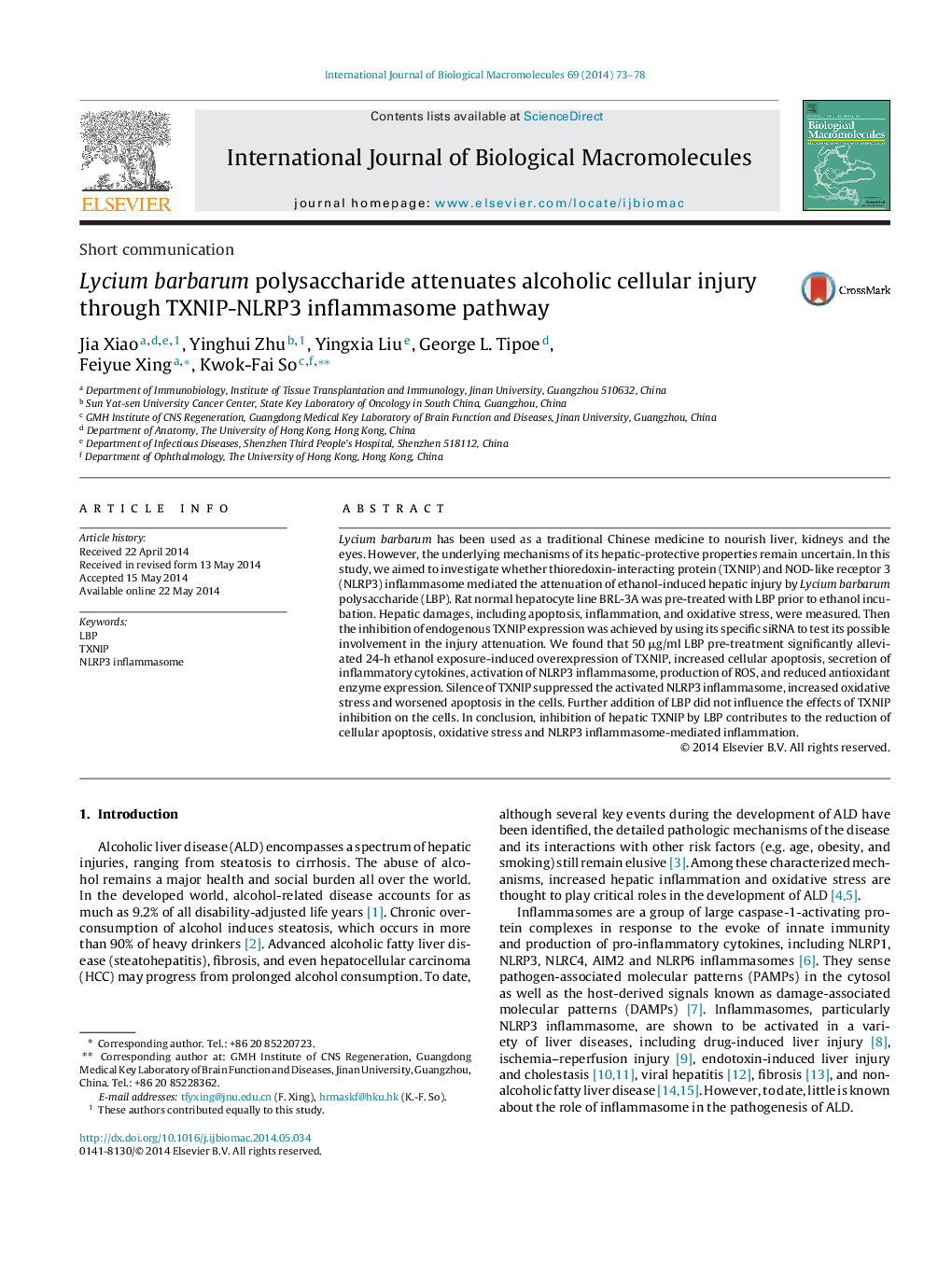| Article ID | Journal | Published Year | Pages | File Type |
|---|---|---|---|---|
| 1986673 | International Journal of Biological Macromolecules | 2014 | 6 Pages |
Lycium barbarum has been used as a traditional Chinese medicine to nourish liver, kidneys and the eyes. However, the underlying mechanisms of its hepatic-protective properties remain uncertain. In this study, we aimed to investigate whether thioredoxin-interacting protein (TXNIP) and NOD-like receptor 3 (NLRP3) inflammasome mediated the attenuation of ethanol-induced hepatic injury by Lycium barbarum polysaccharide (LBP). Rat normal hepatocyte line BRL-3A was pre-treated with LBP prior to ethanol incubation. Hepatic damages, including apoptosis, inflammation, and oxidative stress, were measured. Then the inhibition of endogenous TXNIP expression was achieved by using its specific siRNA to test its possible involvement in the injury attenuation. We found that 50 μg/ml LBP pre-treatment significantly alleviated 24-h ethanol exposure-induced overexpression of TXNIP, increased cellular apoptosis, secretion of inflammatory cytokines, activation of NLRP3 inflammasome, production of ROS, and reduced antioxidant enzyme expression. Silence of TXNIP suppressed the activated NLRP3 inflammasome, increased oxidative stress and worsened apoptosis in the cells. Further addition of LBP did not influence the effects of TXNIP inhibition on the cells. In conclusion, inhibition of hepatic TXNIP by LBP contributes to the reduction of cellular apoptosis, oxidative stress and NLRP3 inflammasome-mediated inflammation.
